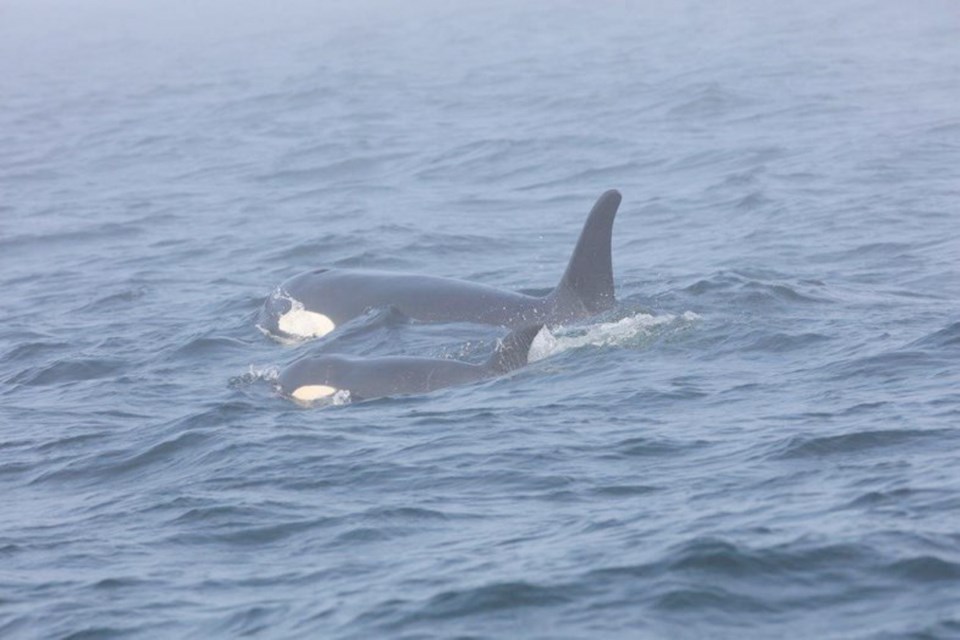An emaciated three-year-old orca that has become the focus of a cross-border rescue effort was spotted in U.S. waters Wednesday afternoon.
Canada’s Department of Fisheries and Oceans said its researchers sighted the female killer whale J50, also known as Scarlet, swimming with her mother and the rest of their pod.
An adult female, J35, was also with the pod, still carrying her dead calf more than two weeks after the newborn died on July 24.
The plight of J50 and J35’s extended grieving process have focused international attention on the endangered southern resident killer whales, whose numbers have dwindled to 75. Researchers cite a shortage of chinook salmon as one of the main reasons for the orcas’ decline.
Canadian and U.S. scientists are particularly anxious to save J50, a juvenile female that has the potential to reproduce and assist with the population’s recovery.
Officials are working together to monitor the orca’s health and develop a plan to intervene, if necessary.
The U.S. National Oceanic and Atmospheric Administration said the young whale appears lethargic at times and scientists fear she might not survive without help.
Researchers hope to gather breath and fecal samples in the coming days to determine whether the orca is suffering from an illness.
“At this time, we don’t actually have a diagnosed pathology other than malnutrition for J50,” said Sheila Thornton, a DFO research scientist.
Potential treatment options include giving the whale antibiotics using a dart injector, a long-pole syringe or, possibly, a live salmon.
Lynne Barre, southern resident killer whale recovery co-ordinator with the U.S. agency, said officials are developing treatment options based on their knowledge of illnesses that have killed orcas in the past.
“We’re using all the best information we have, as well as the experts that we’ve brought to help work on this team,” she said.
Thornton cautioned, however, that Canadian officials have to follow federal law, perform a thorough risk assessment and minimize the impact of any intervention on J50 and her podmates.
Any treatment or close approaches could disturb the whales, interrupt their foraging patterns and put them at further risk, she said.
“We do need to be very cognizant of what the effects of the treatment on J50 would be or what the potential adverse affects on her family members would be,” she said.
“We need to look at what are the potential risks of these broad-spectrum antibiotics, what are the potential risks of the close approach and the diagnostics.”
The weather and the location of the orcas are complicating factors that could prevent intervention, said Paul Cottrell, a marine mammals co-ordinator with DFO.
On Tuesday, the whales were spotted in rough waters off Port Renfrew. Researchers said J50 was keeping up with her mother and moving at a casual speed.
“There’s considerable fog out there,” Cottrell said. “There’s a lot of wind as well. So where the animals are right now, it wouldn’t be an area where you could do these types of activities.”



